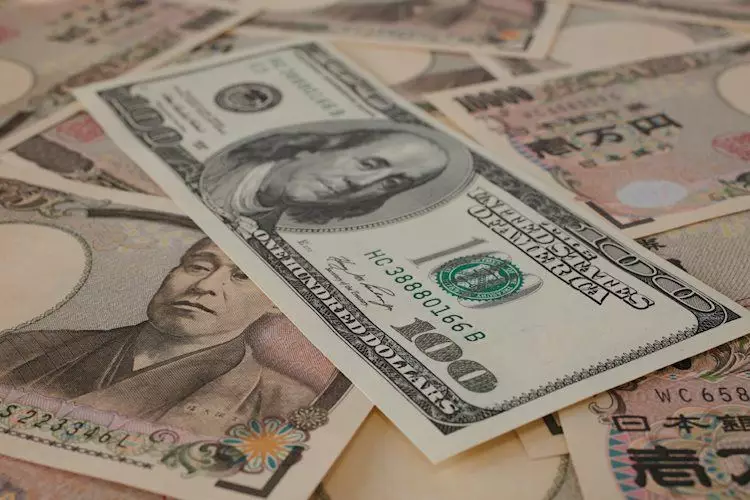In the ever-evolving world of currency trading, analysts and traders today find themselves closely observing the performance of the Japanese Yen (JPY) against its US counterpart (USD). Recent market dynamics have put the Yen at a crossroads, as uncertainty surrounding Japan’s monetary policy creates ripples that both challenge and provide opportunities within the FX markets. Amid an unexpected fall in the jobless rate, speculation about intervention by the Bank of Japan (BoJ) lingers, further influencing trader sentiment.
As the European trading session unfolded, the JPY struggled to maintain any significant upward momentum. Initially, optimism around a minor uptick in the Yen’s value evaporated, effectively dragging it towards the lower end of its recent trading range. This inability to capitalize on even modest gains is symptomatic of deeper market anxieties caused by the potential course of BoJ policy. Furthermore, statements from government officials have also played a crucial role; for instance, Yuichiro Tamaki, the leader of Japan’s Democratic Party for the People, openly voiced opposition to further interest rate hikes. Such comments contribute to the prevailing unease among traders, who are braced for any impending BoJ announcements.
The atmosphere is compounded by bullish trends in global equity markets and rising US Treasury yields, which serve as a counterweight to the JPY. Moreover, the price action witnessed, with a notable rebound of roughly 50 pips from a daily low hovering around the 152.75 mark, could be attributable to a wave of US Dollar buying, which typically exerts downward pressure on the Yen.
Fresh data from Japan’s Statistics Bureau indicates a slight reduction in the unemployment rate, dropping from 2.5% to 2.4%. This drop is more than a mere statistic; it signifies robust demand for labor, raising expectations of wage increases that could potentially push inflation higher—factors crucial for the BoJ’s policy decisions moving forward. While these markers suggest a stronger economic backdrop, the reality of stagnant real wages complicates matters. DPP leader Tamaki suggests any major policy shifts by the BoJ should be approached cautiously to ensure positive wage growth becomes the norm before any radical monetary adjustments are made.
Complicating investor sentiment further are remarks from Katsunobu Kato, Japan’s Finance Minister, who expressed vigilance regarding fluctuations in foreign exchange rates. His words have rekindled memories of past governmental interventions in currency markets, thus creating an underpinning of support for the Yen against rampant speculation in the currency markets.
From a technical standpoint, recent trading patterns indicate a crucial juncture for the USD/JPY pair. A breakout past the confluence zone of 150.65—which incorporates both the 100-day Simple Moving Average and a key Fibonacci retracement level—has often been interpreted as a signal for bullish investors. However, the current lack of sustained momentum beyond the 61.8% Fibonacci retracement level raises red flags. The Relative Strength Index (RSI) indicates the market is nearing overbought territory, suggesting a prudent approach for investors may be to wait for a consolidation phase or a corrective pullback before committing to a bullish stance.
Any potential downward movement could attract buying interest near the daily swing low around 152.65. Still, should selling pressure gain traction, we might witness a decline deeper into the 152.00 territory, with subsequent critical support lying at 151.45 and 151.00. Conversely, if the market finds its feet and experience follow-through buying, the currency pair could eye a return to 154.00—a significant resistance level influencing trader behavior.
The broader economic backdrop, particularly related to the Federal Reserve’s monetary policy, also substantially impacts the USD/JPY exchange rate. The Fed’s dual objectives of maintaining price stability and full employment guide its interest rate adjustments. The impending elections in the US bring additional uncertainty as fiscal conditions fluctuate ahead of vital macroeconomic data releases, including the upcoming job creation figures and inflation metrics.
Such developments often bolster the USD, particularly when inflation remains above the Fed’s target. Moreover, competitive interest rates relative to Japan can lead to capital inflows towards the dollar, further pushing the JPY lower. While the Fed’s policy meetings provide a regular platform for aligning economic strategies, the implications of their decisions ripple through to currency pairs, including the USD/JPY.
As traders navigate this intricate landscape, they must weigh the conflicting signals from Japan’s domestic economy, geopolitical developments, and market sentiment stemming from the US. The interplay of these factors will determine the trajectory of the Japanese Yen in the near term and guide informed trading strategies across the FX market spectrum.

